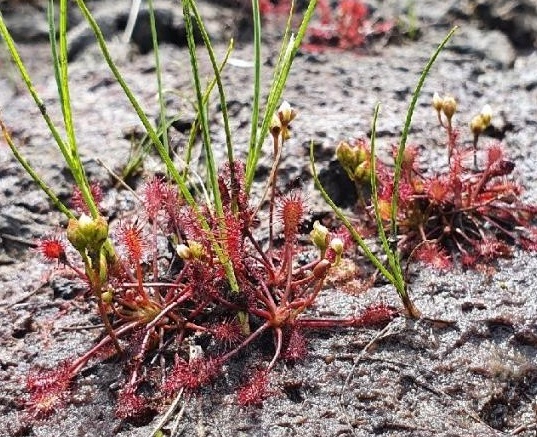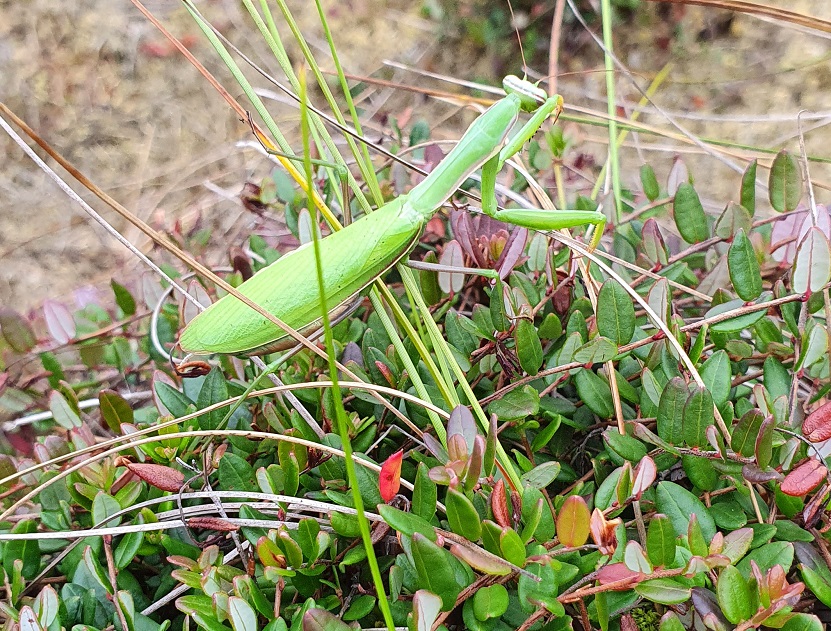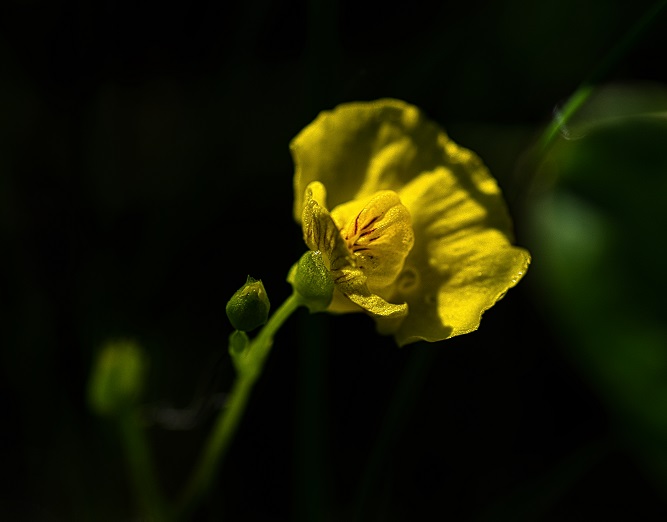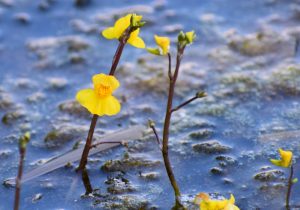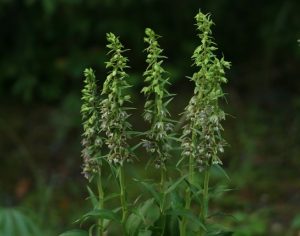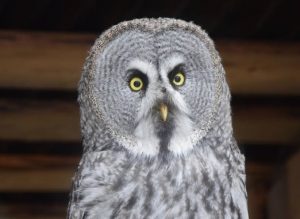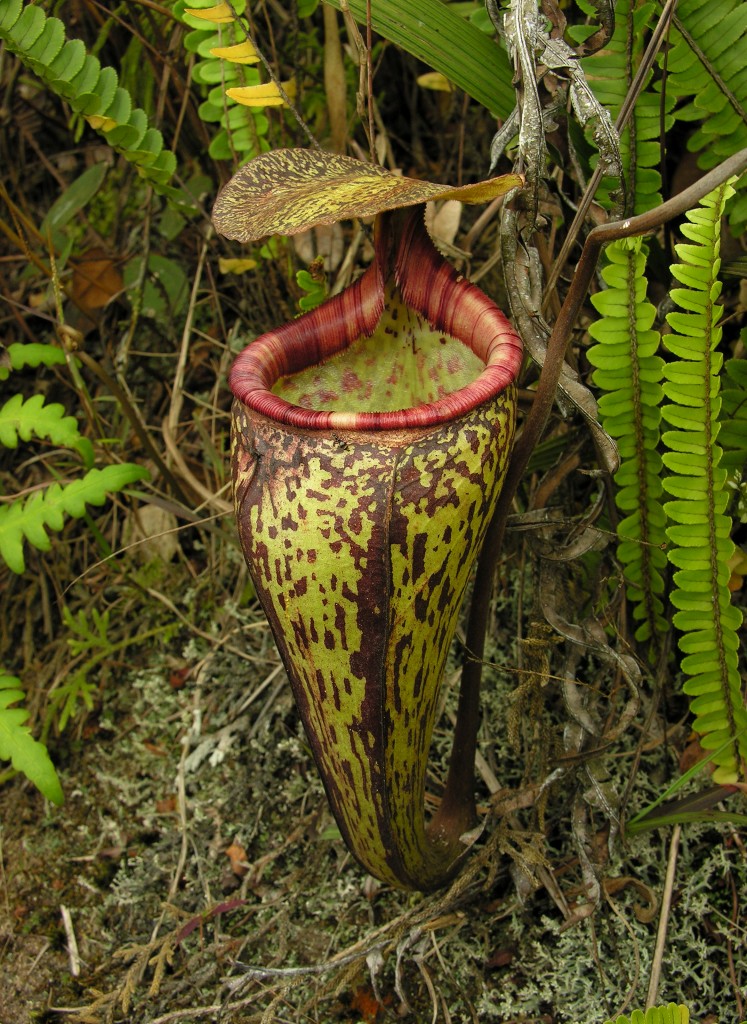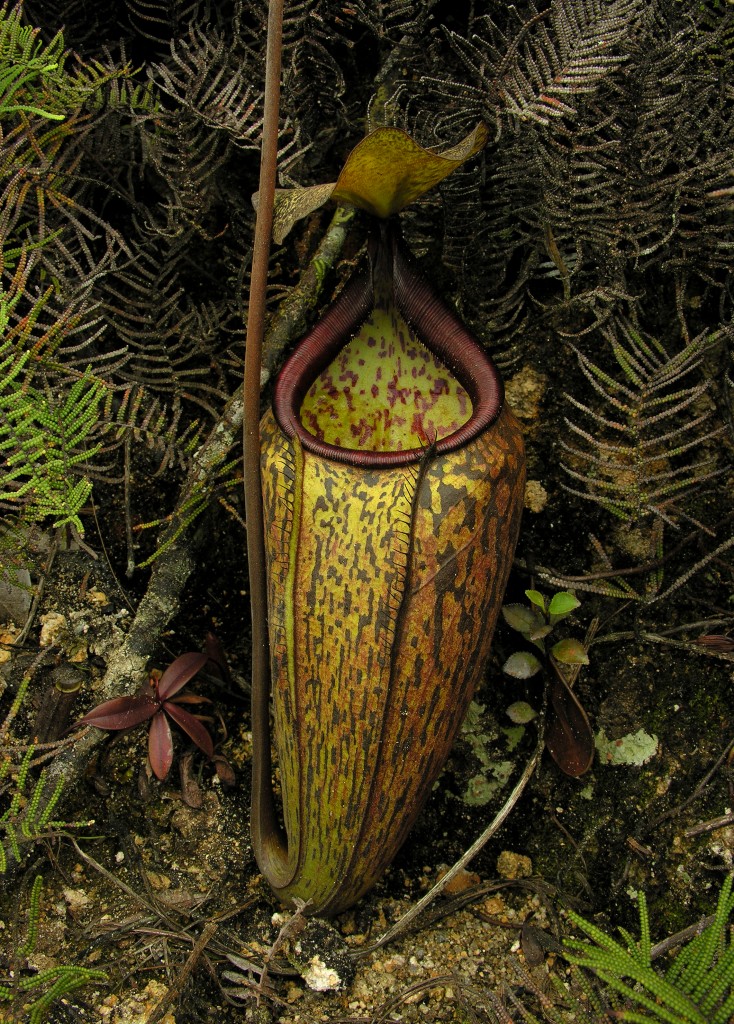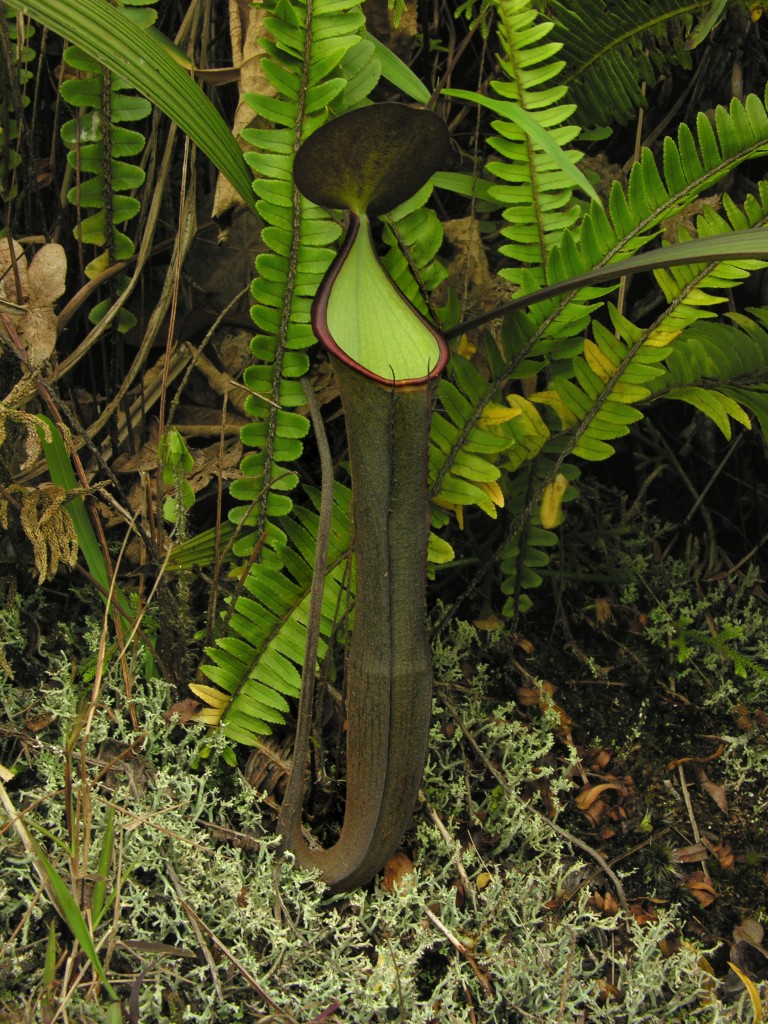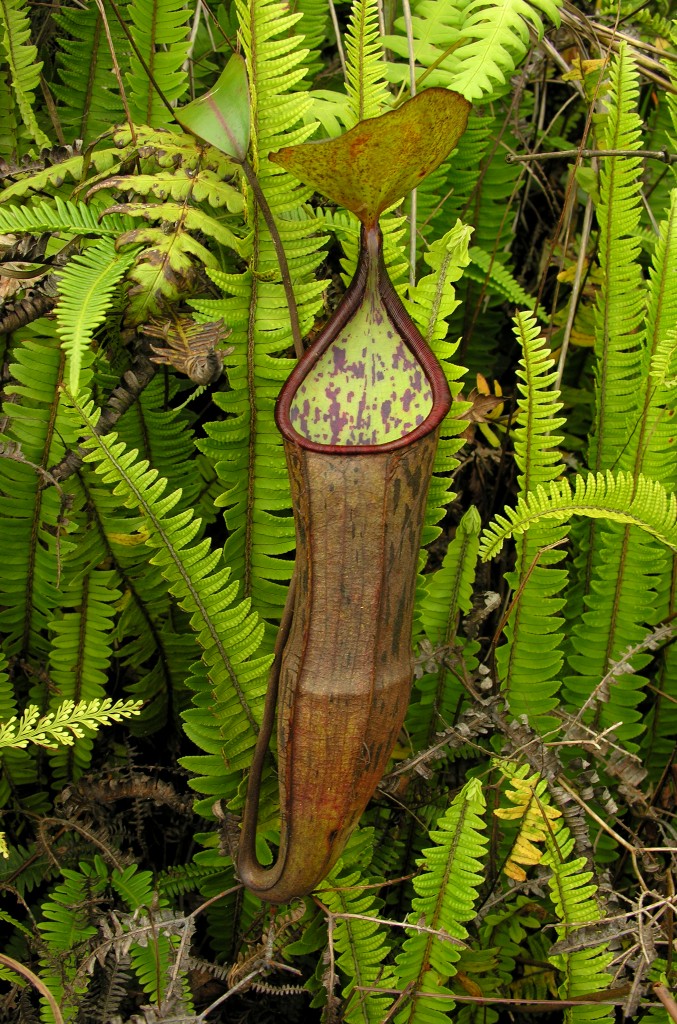Peninsula Malaysia represents a hotspot for plant and animal diversity in South East Asia. Home to all Malaysian states except Sabah and Sarawak, the peninsula occupies an area of 131,500 km² and is dominated by the Banjaran Titiwangsa mountain range and several other smaller mountain complexes. Benefiting from year round high rainfall, Peninsula Malaysia is home to eleven species of pitcher plants, of which, five occur nowhere else in the world. Three of the endemic species are particularly spectacular and widespread, namely N. macfarlanei, N. ramispina and N. sanguinea, and these shall be reviewed in this article.
N. macfarlanei is among the most common pitcher plants of Peninsula Malaysia. This species was named in honour of the Scottish botanist John Macfarlane who worked extensively on the taxonomy of Nepenthes at the start of the 20th century. N. macfarlanei occurs across western Peninsula Malaysia in southern Perak, northern Selangor and the extreme west of Pahang. It occurs from 900–2,150 m, mainly in sparse lower montane or upper montane forest or scrub on ridgetops and mountain summits. It grows both terrestrially or as an epiphyte, and readily produces a branched stem up to 4 m long and scrambles and climbs amidst surrounding vegetation.
The lower pitchers of N. macfarlanei are up to 26 cm long and 9 cm wide and are very variable is shape, size and relative proportions. They are either wholly ovate, amphora shaped, or the botthom half of the trap is infundibular, and the top half is cylindrical or slightly inflated. Often the width of the trap narrows just below the peristome. Wings up to 10 mm wide, fringed with narrow filaments up to 12 mm long run down the front of the pitcher. The exterior of the lower pitchers is yellow, yellowish green, olive green, or orange, usually mottled with long, irregular, dark red or purple blackish and flecks. The interior of the pitcher is yellow, or cream, often with faint red or purple flecks. The peristome may be yellow, orange, red or purple, and is often striped with bands of dark red, purple or black. The lid is yellow, orange or reddish, often mottled with flecks of dark red, purple or black.
The upper pitchers are up to 24 cm long and 7 cm wide and are wholly infundibular, or the bottom half of the pitcher is infundibular and above this part, the width of the trap narrows (often with a hip) and becomes cylindrical or infundibular towards the pitcher opening. Wings are reduced to narrow ridges which run down the (often) flattened front of the pitcher, or may be hardly discernable at all. The colouration of the upper pitchers is consistent with the lower traps, except that it is generally lighter and more vivid.
N. sanguinea is also widely distributed across Peninsula Malaysia. It’s name is derived from the Latin sanguineus (blood red) and refers to the colouration of the pitchers of this plant. N. sanguinea is also widely distributed across the rugged interior of Peninsula Malaysia and the extreme south of Thailand. It occurs at altitudes of 300–1,800, although is mostly found above 1,000 m, growing in lower and upper montane forest and scrub on ridgetops and mountain summits, or on mossy slopes and cliffsides and amidst recovering, secondary vegetation.
It produces pitchers up to 35 cm long and 7 cm wide. The bottom third to half of the trap is ovate. Above this part, the width of the pitcher narrows (with a distinct hip) and becomes cylindrical towards the pitcher opening. Wings up to 8 mm wide, fringed with filaments up to 12 mm long run down the front of the pitcher. The exterior of the lower pitchers is usually red, dark red or purple, but may be yellowish green, orange or dark purplish black. Often the exterior is lined with faint, dark red or purple blotches. The interior of the pitcher is cream or light yellowish green, occasionally with small red or purple flecks. The peristome is usually pure red or purple, and darkens towards the back of the pitcher opening (particularily below the lid). The upper surface of the lid is the same colour as the exterior of the pitcher, and the lower surface may be yellow, green or red.
The upper pitchers are up to 28 cm long and 6 cm wide. The bottom half of the trap is narrowly ovate and elongated. Above this part, the width of the pitcher narrows (with a distinct hip) and becomes cylindrical towards the pitcher opening. Wings are reduced to narrow ridges which run down the front of the pitcher, or may be hardly discernable at all. The exterior of the upper pitchers may be yellow, green, orange, red or reddish purple, sometimes mottled with faint dark red blotches. The interior of the pitcher is light yellow or cream, and the peristome is yellow, orange or reddish. Occasionally, the upper pitchers have “eye–spots” on the interior of the pitcher opening, much like N. reinwardtiana (see above). The upper surface of the lid is the same colour as the exterior of the pitcher, and the lower surface may be yellow, green or red.
The third species, N. ramispina, is named after Latin ramus (branch) and spina (spine) and refers to the structure of the spur present on the pitchers of this plant. It occurs across the Titiwangsa Mountains of Negri Sembilan, Selangor, Pahang, Perek and Kelantan at altitudes of 900–2,000 m, mainly in sparse lower montane or upper montane forest or scrub on ridgetops and mountain summits, or on mossy slopes and cliffsides and amidst recovering, secondary vegetation. It grows both terrestrially or as an epiphyte, and readily produces a branched stem up to 5 m long and scrambles and climbs amidst surrounding vegetation.
N. ramispina is very distinctive and easily distinguished from all other Malaysian pitcher plants by its trap morphology. The lower pitchers are up to 22 cm long and 5 cm wide. The bottom third to half of the pitcher is ovate and variably swollen, though elongated and narrow. Above this part, the width of the pitcher narrows (usually with a distinct hip) and becomes cylindrical or very slightly infundibular towards the pitcher opening. Wings up to 8 mm wide, fringed with filaments up to 12 mm long, run down the front of the lower pitchers (although often are greatly reduced). The exterior of the pitcher is black in plants growing in direct sunlight and purplish brown often with black blotches in plants growing in shade (and in the intermediate pitchers). The interior of the trap is pure light yellowish green and the peristome is bright yellow in young, newly opened pitchers and suffused purple or black as the traps age. The upper surface of the lid is black and the lower surface is yellow, orange or reddish.
The upper pitchers are produced only when the plant develops a climbing stem, and usually only in small numbers and only after many intermediate pitchers have been produced. The upper traps are up to 20 cm high and 4 cm wide, but usually are much smaller than these maximum measurements. The bottom third of the pitcher is ovate variably swollen, though elongated and narrow. Above this part the width of the pitcher narrows (usually with a distinct hip) and becomes cylindrical or slightly infundibular towards the pitcher opening. The upper pitchers are rhomboid in cross section, and the pitcher opening is often angular. Wings are reduced to narrow ridges which run down the flattened front of the trap. The exterior of the upper pitcher and the upper surface of the lid are dull green or blackish green. The interior of the pitcher and the lower surface of the lid are light yellow or light green, and the peristome is yellow in young, newly opened pitchers, but gradually turns red, purple and black.
All three species are easily distinguished in the wild and are unlikely to be confused, owing to their very different pitcher structure and colouration. Hybrids involving these three plants are often very common where these species grow together.
Fortunately all three species remain widespread across the rugged interior of Peninsula Malaysia, and populations of all three (though particularly N. macfarlanei and N. sanguinea) occur within protected areas and national parks. All three species can be seen easily at the Genting Highlands resort, two hours outside of Kuala Lumpur!
Stewart McPherson
